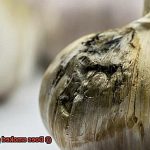Imagine the tantalizing scent of smoky goodness wafting from the grill, building anticipation for a feast of perfectly charred, succulent meat. As barbecue enthusiasts, we relish this experience. However, amidst the mouthwatering flavors, a nagging question lingers – does smoking meat come at a hidden health cost?
In this blog post, we dive deep into the potential health implications of smoking meat. While smoked meats hold an irresistible allure, concerns have been raised about how this traditional cooking method affects our well-being. To truly understand the risks involved, we must examine the evidence that casts a shadow over our beloved smoked delicacies.
Countless studies have suggested that smoking meat produces harmful compounds called polycyclic aromatic hydrocarbons (PAHs) and heterocyclic amines (HCAs). These compounds have been linked to an increased risk of developing cancer, especially when consumed excessively or over prolonged periods.
But fear not, fellow smoked meat enthusiasts. We’re here to separate fact from fiction and shed light on how to strike a balanced approach to enjoying this mouthwatering culinary tradition without compromising our health.
So, grab your apron and join us as we navigate through the smoke-filled haze of information to uncover the truth about whether smoking meat makes it unhealthy.
Contents
What is Smoking Meat?
There is an undeniable allure to the smoky aroma and tender texture of perfectly smoked meat. Whether you are a seasoned griller or a curious beginner, understanding the art of smoking meat is essential to elevate your culinary skills. In this comprehensive guide, we will delve into the process of smoking meat, explore the different types of smokers available, and address the potential health concerns associated with this cooking method.
Mastering the Technique:
Smoking meat is a slow-cooking process that involves exposing it to smoke from burning wood or charcoal. This method not only imparts a distinct smoky flavor but also helps preserve the meat and break down tough connective tissues, resulting in tender and juicy results. Patience is key when it comes to smoking meat as it can take several hours to achieve that perfect balance of flavors and textures.
Types of Smokers:
- Electric Smokers: Ideal for beginners, electric smokers offer convenience and ease of use. They regulate temperature automatically, ensuring consistent results without the need for constant monitoring.
- Charcoal Smokers: For those seeking a traditional and authentic smoking experience, charcoal smokers are the way to go. They provide an unmatched smoky flavor and allow for greater control over temperature by adjusting the amount of charcoal used.
- Wood-Fired Smokers: If you crave a truly unique smoky taste, then wood-fired smokers are your best bet. Different types of wood, such as hickory or applewood, impart their own flavors to the meat, adding complexity and depth to your dishes.
Health Considerations:
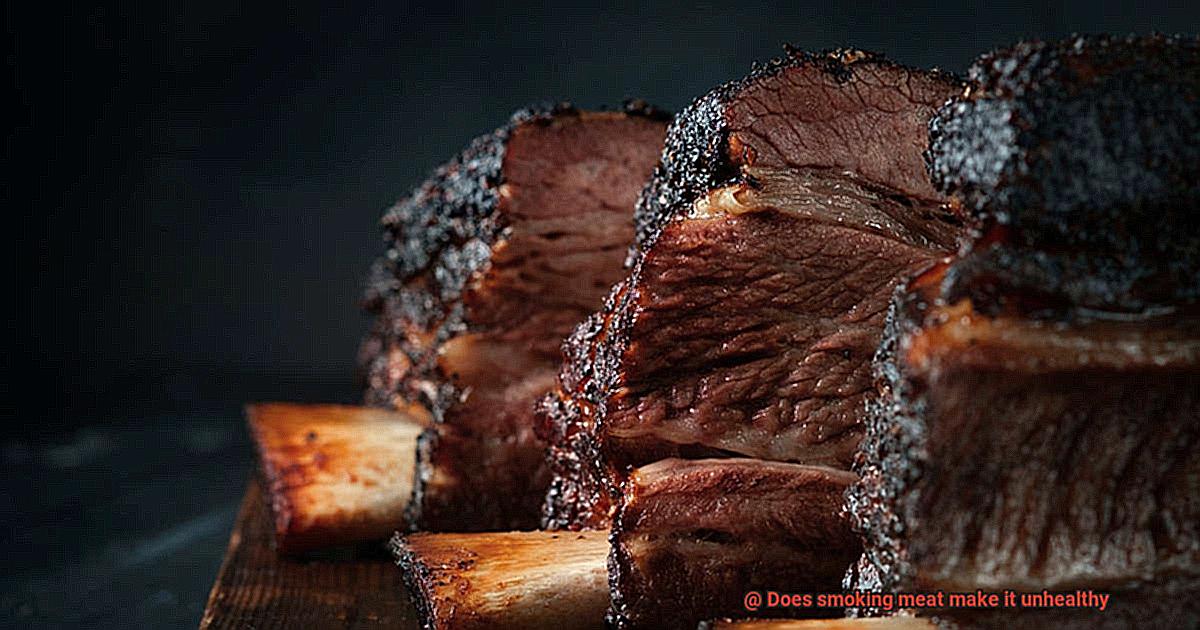
While smoking meat has its undeniable charms, it is crucial to be aware of potential health risks associated with this cooking method. Here are some guidelines to ensure a healthier approach to smoking:
- Choose Lean Cuts: Opt for lean cuts of meat and trim off excess fat before smoking to reduce the formation of harmful compounds. This not only promotes a healthier diet but also prevents flare-ups and excessive smoke production.
- Marinate with Acidic Ingredients: Marinating the meat in acidic ingredients like vinegar or lemon juice before smoking can help reduce the formation of harmful compounds like heterocyclic amines (HCAs) and polycyclic aromatic hydrocarbons (PAHs).
- Avoid Charring: Charring or burning the meat increases the formation of potentially carcinogenic compounds, so aim for a slow and steady cooking process. Use indirect heat to prevent flare-ups and always monitor the temperature inside the smoker.
- Moderation is Key: Enjoy smoked meat as an occasional treat rather than a regular part of your diet to minimize health risks associated with excessive sodium and nitrates present in certain smoked products.
Potential Health Risks of Smoking Meat
Today, we embark on a flavorful journey that not only tantalizes our taste buds but also uncovers the potential health risks associated with smoking meat. So, grab your favorite apron and let’s dive into the world of smoky goodness, where danger lurks amidst the delectable aromas.
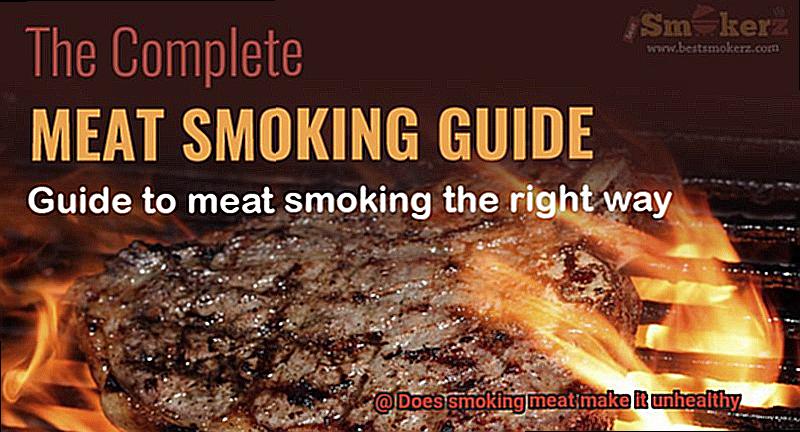
The Smoking Process:
Smoking meat is an art form, a slow-cooking technique that infuses captivating flavors using smoke produced from burning wood or charcoal. As the ethereal smoke envelops the meat, it imparts a unique taste and aroma that beckons us to indulge. Yet, beneath this smoky allure lies a dark side—a myriad of potential health risks that demand our attention.
The Formation of Harmful Compounds:
Amidst the swirling smoke, danger takes shape. Polycyclic aromatic hydrocarbons (PAHs) and heterocyclic amines (HCAs), insidious compounds that have been linked to cancer, can emerge during the smoking process.
PAHs are born from sizzling fat, as it drips onto scorching coals or wood chips, igniting flare-ups and releasing smoke teeming with carcinogens. HCAs, on the other hand, arise from meats cooked at searing temperatures. These treacherous compounds have been implicated in DNA damage and an increased risk of cancer.
Bacterial Concerns:
While smoking preserves meat to some extent by inhibiting bacterial growth, it cannot eradicate all risks. The battle against contamination rages on. Improper handling or storage of smoked meat can provide an opening for bacteria like Salmonella or E. coli to flourish, potentially causing a whirlwind of foodborne illnesses.
So, let us wield our knowledge and adopt proper food safety practices to shield ourselves from these microbial foes.
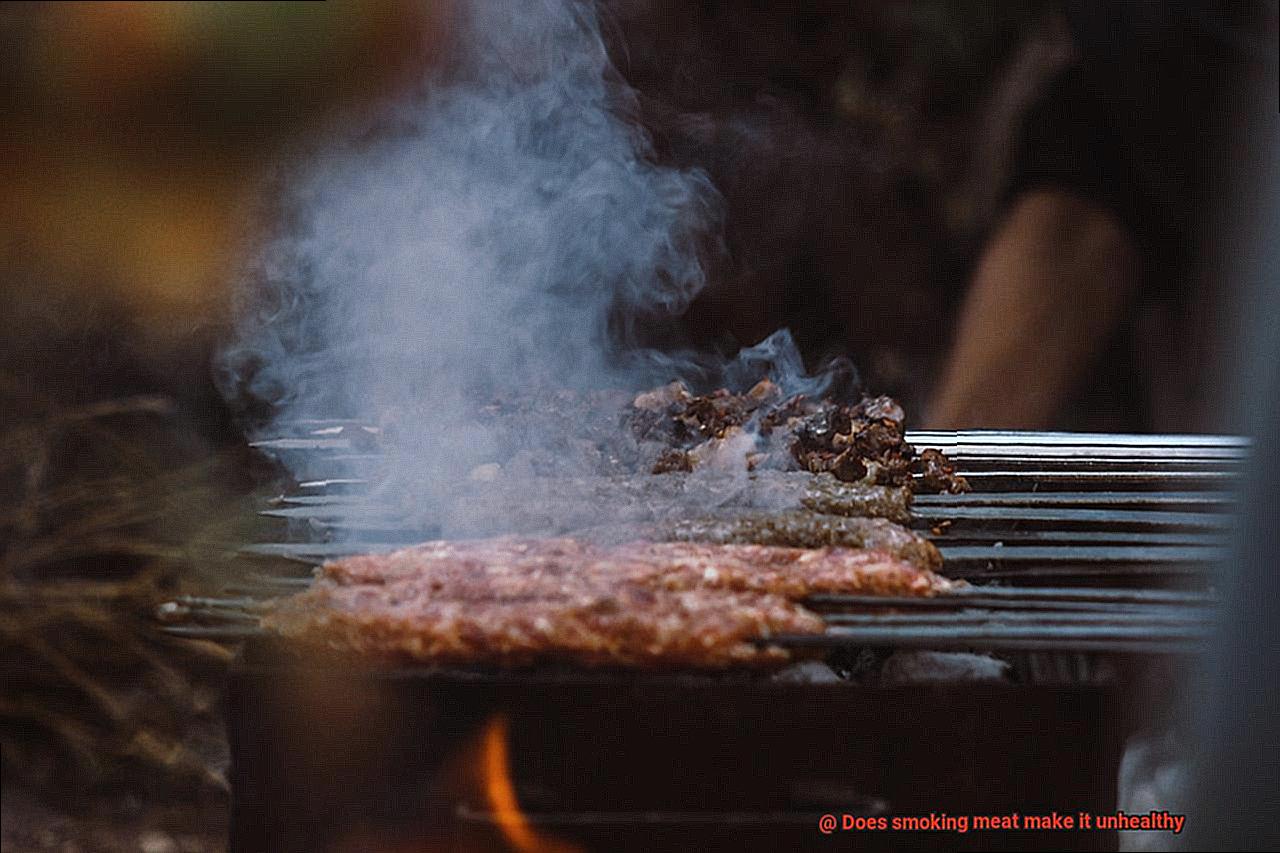
Sodium and Nitrates:
Within the savory depths of smoked meats, sodium and nitrates lie in wait. Sodium, a double-edged sword, enhances flavors and extends shelf life, yet excessive intake can lead to the treacherous path of high blood pressure.
Nitrates, the culprits behind that tantalizing pink hue, can transform into perilous nitrosamines within our bodies, potentially increasing the risk of certain cancers. A delicate balance must be struck between flavor and health.
Moderation and Food Safety:
In this fiery dance between flavor and peril, moderation emerges as our shield. The frequency of consumption, the types of meat we choose to smoke, and the careful management of cooking temperatures and times all influence the impact on our health.
By embracing moderation and practicing proper food safety measures, we can minimize the potential adverse effects and savor our smoked meats with confidence.
Polycyclic Aromatic Hydrocarbons (PAHs)
As we gather around the fire, let’s delve into the hidden dangers that lie within those mouthwatering flavors.
Polycyclic Aromatic Hydrocarbons (PAHs) are compounds that form when organic substances, like meat, are grilled or smoked at high temperatures. These chemicals arise through the fascinating alchemy of incomplete combustion, settling in the smoke and charred parts of our grilled delicacies.
Research has unveiled the unsettling truth that exposure to high levels of PAHs can increase the risk of certain types of cancer, such as lung, bladder, and skin cancer. Consequently, it is crucial to adopt measures that minimize PAH formation and reduce exposure.
Firstly, opt for leaner cuts of meat as PAHs are primarily formed in fatty tissues. Trimming excess fat before grilling helps reduce the amount of PAHs produced. Additionally, marinating meat with vinegar, citrus juice, or herbs creates a protective barrier between the meat and smoke, effectively reducing PAH formation.
To further minimize PAH formation, embrace indirect grilling methods like a smoker box or charcoal grill with a water pan. These methods allow for lower cooking temperatures and decrease the amount of fat dripping onto the heat source.
Monitoring cooking temperatures is vital too; avoid excessive charring or burning of meat as it substantially increases PAH levels. Moderation is key – balance your grilled delights with a variety of other cooking methods and maintain a well-rounded diet and lifestyle.
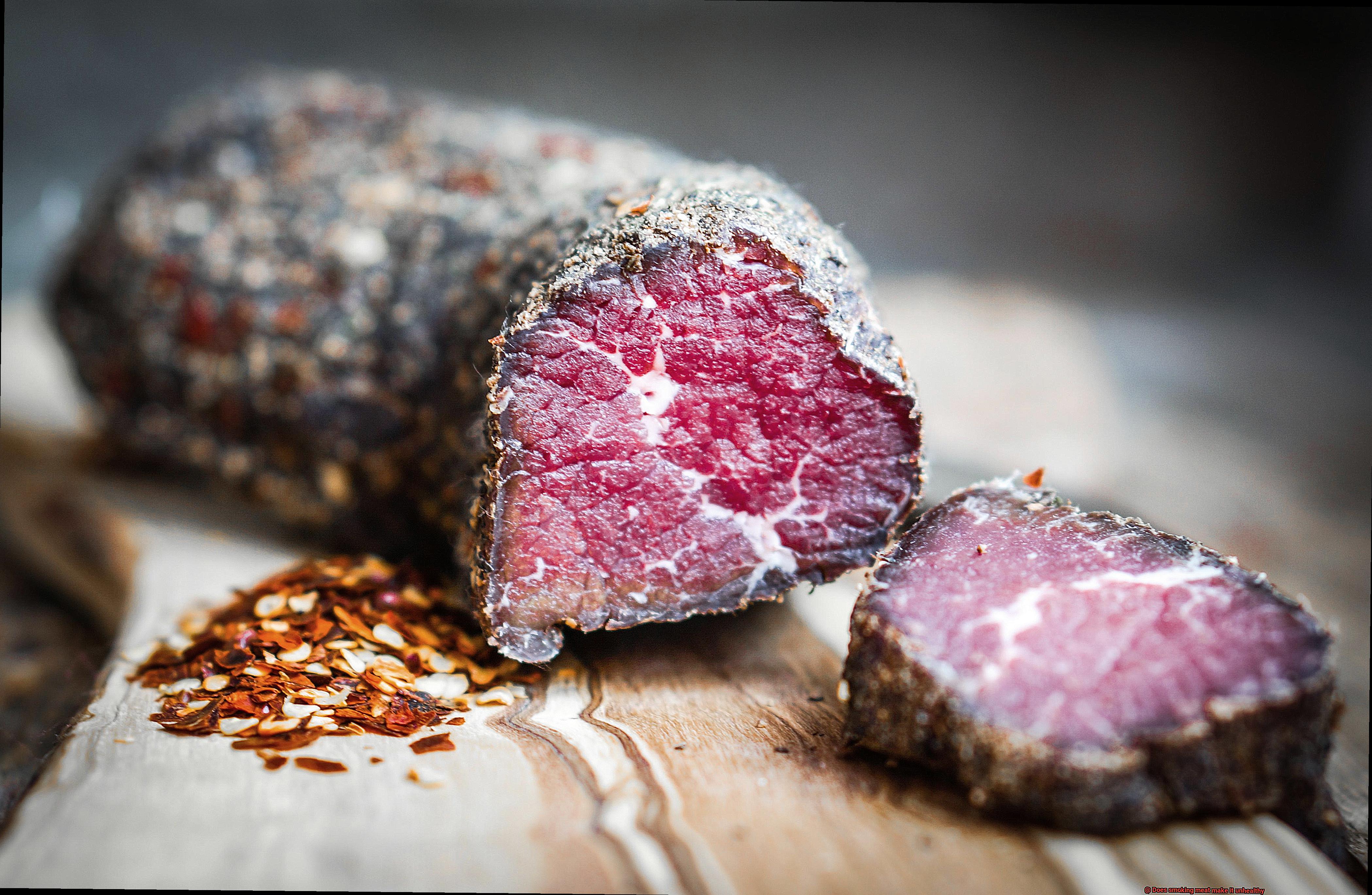
Heterocyclic Amines (HCAs)
The tantalizing sizzle of meat on a hot grill, the aromatic smoke wafting through the air, and the anticipation of that mouthwatering first bite. But beware. Our beloved grilled meats can harbor hidden dangers: Heterocyclic Amines (HCAs). These chemical compounds form when meat is cooked at high temperatures. Join us on a fiery journey as we explore the science behind HCAs and discover how to grill with safety in mind.
The Science Behind HCAs:
When amino acids and creatine, naturally present in meat, react to high temperatures, HCAs are formed. These compounds have been classified as potential carcinogens, meaning they can cause cancer. Research links HCAs to an increased risk of colorectal, pancreatic, and prostate cancer. Understanding how grilling practices contribute to HCA formation is crucial.
Grilling Techniques and HCA Formation:
Direct exposure to flames or high heat increases HCA formation during grilling and barbecuing. Longer cooking times and higher temperatures intensify HCA production. Smoking meat also contributes to HCA formation, as smoke contains polycyclic aromatic hydrocarbons (PAHs) that react with amino acids and creatine.
Reducing HCA Formation:
To minimize HCA formation, follow these practical tips:
- Choose lean cuts of meat and trim excess fat before grilling. Fat dripping onto hot coals or flames causes flare-ups, leading to higher temperatures and increased HCAs.
- Marinate your meat before grilling. Acidic marinades with vinegar or citrus juices reduce HCA production while adding flavor to your creations.
- Opt for indirect grilling methods. Place the meat away from direct contact with flames or hot coals, cooking at lower temperatures for longer durations. This decreases significant HCA production.
- Monitor cooking temperatures. Excessive charring or burning of meat dramatically increases HCA levels. Aim for a golden brown color rather than a charred exterior.
Grilling is an art that brings people together, ignites our taste buds, and creates lasting memories. Understanding HCAs and adopting safer grilling practices allow us to enjoy grilled meats while safeguarding our health. Choose lean cuts, marinate your meat, use indirect grilling methods, and monitor cooking temperatures.
Fire up that grill, take precautions, and indulge in the flavors of summer with peace of mind.
Excessive Sodium and Nitrates in Smoked Meats
Imagine a warm summer evening, the sizzle of meat on the grill, and the mouthwatering aroma that fills the air. Grilling is more than just a cooking method; it’s a cultural experience that brings people together. However, before indulging in perfectly smoked meats, it’s crucial to understand the potential health risks associated with excessive sodium and nitrates lurking within these delectable creations.
The Hidden Dangers:
Excessive sodium levels found in smoked meats can wreak havoc on your health. High blood pressure and an increased risk of heart disease are just a couple of concerns linked to consuming too much sodium. Furthermore, the curing process often involves using nitrates and nitrites, which can convert into nitrosamines during cooking or digestion. These nitrosamines are known carcinogens, increasing the risk of certain cancers.
Grill with Caution:
To ensure a healthier grilling experience, moderation is key. Occasionally enjoy smoked meats instead of making them a regular part of your diet. Opt for lower-sodium versions or try your hand at homemade smoked meats, allowing you to control the salt content. By reducing excessive sodium and nitrates intake, you can protect your health without sacrificing flavor.
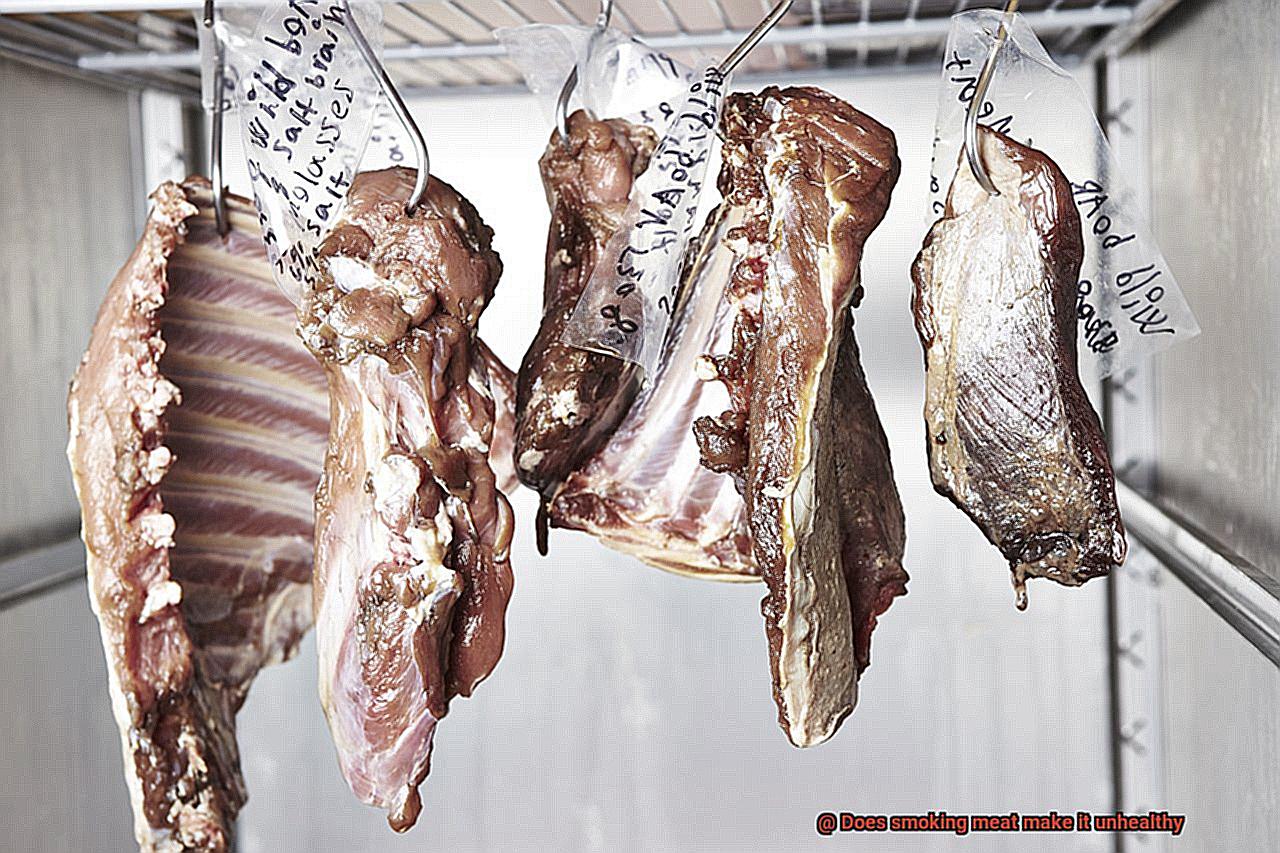
Read Labels and Make Informed Choices:
Not all smoked meats are created equal. Some manufacturers provide low-sodium or nitrate-free options for individuals conscious of these additives. Take the time to read labels and choose products with minimal additives. This way, you can make informed decisions when consuming smoked meats.
Consider Other Factors:
While excessive sodium and nitrates are concerns, other factors influence the overall healthiness of smoked meats. The type and quality of meat used, cooking methods, and additional ingredients or seasonings play pivotal roles. Opt for leaner cuts of meat, natural wood smoke, and limit the use of unhealthy fats and sugary marinades to create a healthier grilled masterpiece.
Factors That Determine the Health Risks Associated with Smoking Meat
Attention, grill aficionados. Prepare yourself for a tantalizing expedition into the realm of smoked meats. But before you succumb to the intoxicating allure of smoky flavors, let’s delve into the factors that determine the health risks associated with smoking meat. Armed with knowledge, we can strike a balance between indulgence and well-being.
- Type of meat: Not all meats are created equal. Processed meats like bacon and hot dogs are notorious for their high sodium and saturated fat content, which escalates the risk of heart disease. Opting for leaner meats such as chicken or turkey can help curtail these risks.
- Smoking method: Traditional smoking with wood chips or chunks bestows that irresistible smoky essence upon your meat. However, it also exposes it to harmful compounds like polycyclic aromatic hydrocarbons (PAHs) and heterocyclic amines (HCAs) that have been linked to cancer. Consider alternative methods like liquid smoke or smoke-flavored additives to mitigate these risks.
- Temperature and cooking time: The temperature at which you smoke your meat and the duration of cooking play pivotal roles in its health risks. High temperatures and prolonged cooking give rise to HCAs, culprits associated with various cancers. Vigilantly monitor smoking temperatures and opt for shorter cooking times to minimize these hazards.
- Marination and seasoning: Marinating your meat pre-smoking can be a game-changer. Certain ingredients like citrus juices or vinegar can hinder the formation of HCAs during smoking. Beware, though, of sodium, sugar, and artificial additives lurking in marinades or seasoning mixes. They may contribute to issues like high blood pressure or obesity.
- Personal consumption habits: As with any pleasure, moderation is key. Enjoying smoked meats as part of a balanced diet can diminish the associated health risks. However, excessive consumption, particularly of sodium-laden and saturated fat-rich smoked meats, can lead to obesity, high blood pressure, and cardiovascular diseases. Savor the smoky delights, but be mindful of your intake.
By understanding these factors and making informed choices regarding the type of meat, smoking method, temperature, cooking time, marinades, and personal consumption habits, you can master the art of smoking meat while safeguarding your well-being. So ignite that smoker and relish the creation of a healthier masterpiece without sacrificing flavor.
Recommendations to Minimize the Potential Health Risks of Smoking Meat
Smoking meat is an art form that imparts a tantalizing smoky flavor, but it’s crucial to be aware of the potential health risks involved. Fear not, my fellow grill masters. I have meticulously researched and compiled a comprehensive list of recommendations to minimize these risks and ensure a safer and healthier grilling experience.
First and foremost, let’s start with the foundation – the meat itself. Opt for high-quality cuts that are fresh, organic, and preferably grass-fed or free-range. These meats contain fewer additives, hormones, and antibiotics, reducing the potential interactions between smoke and harmful compounds.
Next, we dive into the realm of marinating. This not only enhances the flavor but also acts as a powerful tool in reducing the formation of harmful compounds. Ingredients like vinegar, citrus juices, and herbs possess antioxidants and antimicrobial properties that combat the creation of those pesky compounds. Marinating not only adds an extra layer of deliciousness but also acts as a shield against potential health risks.
To further safeguard against health risks, consider partially precooking your meat before smoking. A brief period of boiling or steaming can work wonders. By partially cooking the meat beforehand, you decrease its overall exposure to smoke and potentially harmful compounds.
Ventilation is key when it comes to using a smoker. Ensure that your smoker has proper ventilation to effectively release smoke. This prevents the accumulation of smoke, which can increase the concentration of harmful chemicals on the meat’s surface. Additionally, maintaining a consistent temperature within the smoker aids in reducing health risks.
Never underestimate the importance of monitoring cooking temperatures. It is essential to ensure that the internal temperature reaches a safe level to eliminate bacteria and other pathogens. Invest in a reliable meat thermometer for accurate readings and to prevent undercooking or overcooking.
Moderation is the name of the game. While smoked meats are undeniably delicious, it’s crucial to consume them in moderation. Excessive consumption, particularly of fatty and sodium-laden smoked meats, can heighten the risk of health issues such as heart disease and high blood pressure. Strike a balance by incorporating a variety of other healthy foods like fresh fruits, vegetables, and whole grains into your diet.
Lastly, knowledge is power. Stay informed about the potential health risks associated with smoking meat. Keep up with current research and guidelines from reputable sources. By arming yourself with knowledge, you can make informed decisions and take appropriate measures to minimize health risks while indulging in the smoky goodness.
YWE1q7n4Wfc” >
Conclusion
In conclusion, smoking meat can indeed have negative health implications. The process of smoking involves the formation of harmful compounds such as polycyclic aromatic hydrocarbons (PAHs) and heterocyclic amines (HCAs), which have been linked to an increased risk of cancer.
Additionally, the high temperatures used in smoking can cause the formation of nitrosamines, another group of potentially carcinogenic substances. Furthermore, the prolonged cooking time required for smoking can lead to a loss of moisture and nutrients in the meat, making it less nutritious overall.
However, it’s important to note that moderation is key. Enjoying smoked meat occasionally as part of a balanced diet is unlikely to have significant adverse effects on your health. It’s also worth considering healthier alternatives to traditional smoking methods, such as using natural wood chips or herbs instead of artificial smoke flavorings.
Ultimately, the decision to consume smoked meat should be based on personal preferences and individual health considerations. If you enjoy the smoky flavor and are aware of the potential risks associated with smoking meat, there’s no harm in indulging every now and then. Just remember to prioritize overall dietary diversity and moderation for optimal health outcomes.
So, while smoking meat may not be the healthiest option available, it doesn’t mean you have to completely give up on this delicious culinary tradition.





